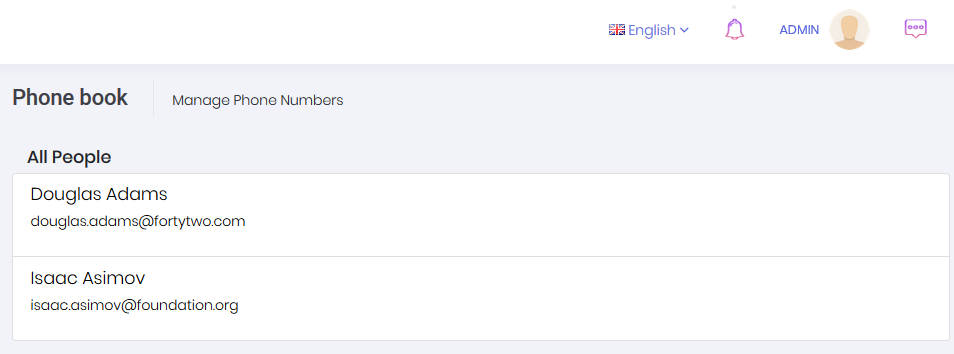Using GetPeople Method From MVC Controller
It's time to open PhoneBookController and get people to show on the view:
[Area("App")]
public class PhoneBookController : PhoneBookDemoControllerBase
{
private readonly IPersonAppService _personAppService;
public PhoneBookController(IPersonAppService personAppService)
{
_personAppService = personAppService;
}
public ActionResult Index(GetPeopleInput input)
{
var output = _personAppService.GetPeople(input);
var model = ObjectMapper.MapTo<IndexViewModel>(output);
return View(model);
}
}
We inject IPersonAppService and call its GetPeople method (which is created and tested before) to get list of people. Then we created a ViewModel object and passes to the view. Let's see the IndexViewModel class:
[AutoMapFrom(typeof(ListResultDto<PersonListDto>))]
public class IndexViewModel : ListResultDto<PersonListDto>
{
}
Here, we're extending the output of the PersonAppService.GetPeople method. We get the output from the constructor and map it to this object.
Application Services and ViewModels
We created an Application Service (PersonAppService) and used it from the Controller. Instead, we could access Repository directly from Controller and completely discard the application service. ASP.NET Zero does not enforce any architecture here. In ASP.NET Zero, we use the application layer (application services and DTOs). Therefore, we implemented it independent from ASP.NET MVC. This makes application layer re-usable from different presentation layers. But if you will only develop ASP.NET MVC, you can implement application logic inside controllers and access to the repositories from controllers. This may simplify your architecture and development model.
If you decide to develop application services and use them in controllers then you can use application service's output as your view model. We did not prefer it and wrapped output by a dedicated ViewModel (IndexViewModel here) since we think that we may add some additional properties/methods for our view model. Again, it's your choice of implementation.
Rendering People In MVC View
We show people on the page is most basic form. See the changed view below:
...
@model Acme.PhoneBookDemo.Web.Areas.App.Models.PhoneBook.IndexViewModel
...
<h5 class="kt-subheader__title">@L("AllPeople")</h5>
<div class="list-group">
@foreach (var person in Model.Items)
{
<a href="javascript:;" style="color: black" class="list-group-item">
<h5 class="list-group-item-heading" style="font-weight: lighter">
@person.Name @person.Surname
</h5>
<p class="list-group-item-text">
@person.EmailAddress
</p>
</a>
}
</div>
...
We declared the @model and used a foreach loop to render people. See the result:

We successfully retrieved list of people from database to the page.
About Showing Tabular Data
We normally use a javascript based rich table/grid library to show tabular data, instead of manually rendering data like that. For example, we used to use datatables library to show users on the Users page of ASP.NET Zero. Always use such components since they make things much more easier and provides a much better user experience.
We did not use a table component here, because we want to show basics of MVC instead of going details of a 3rd party library.
